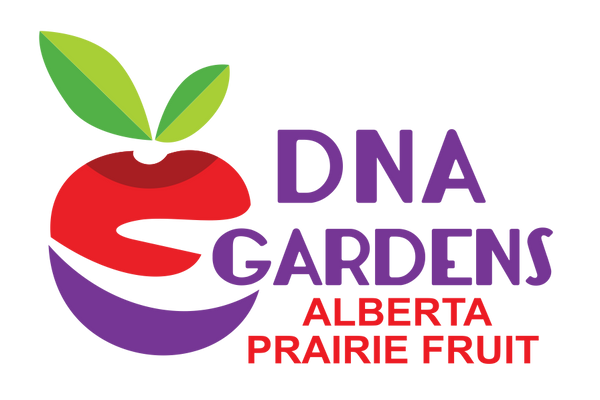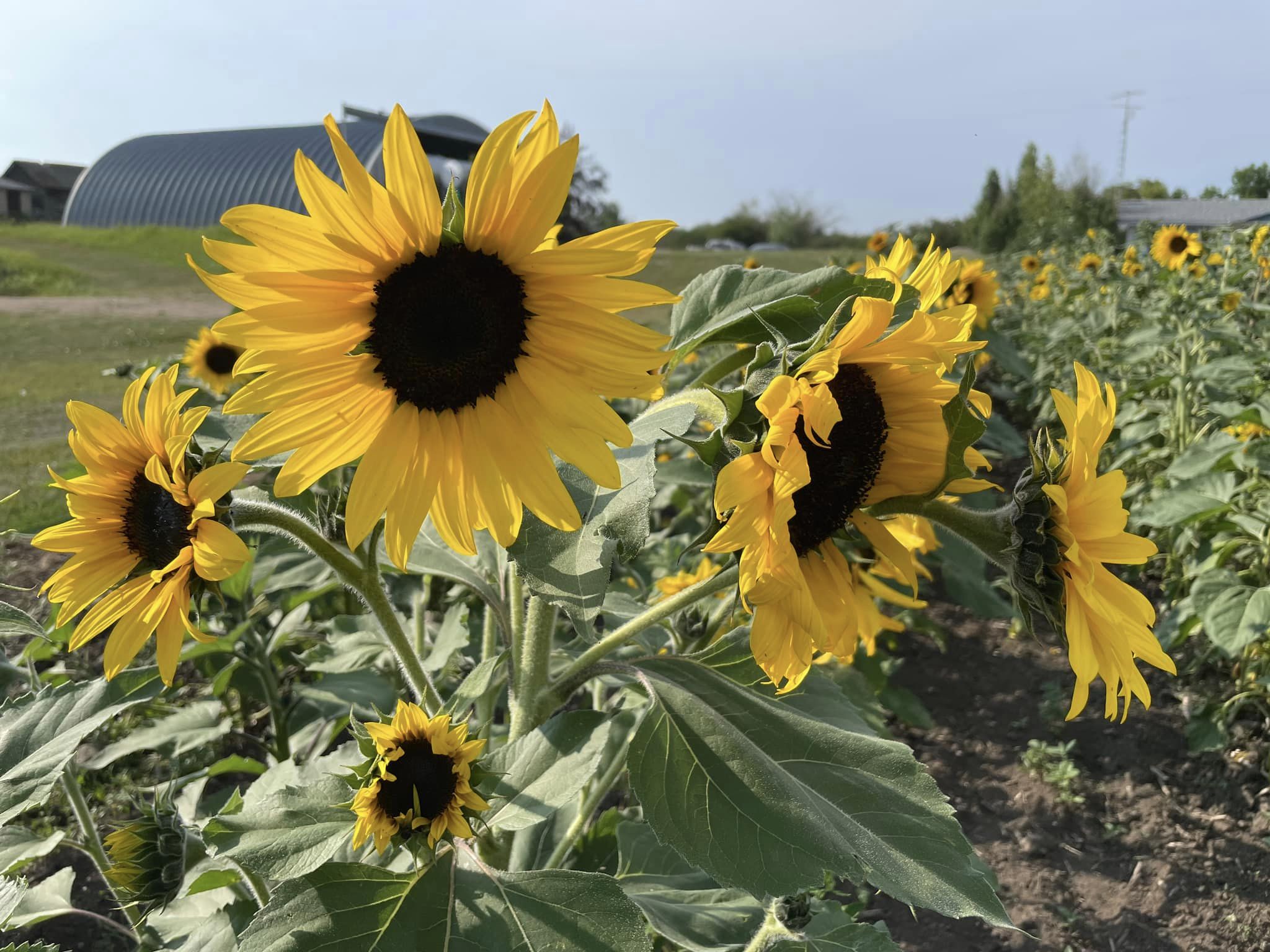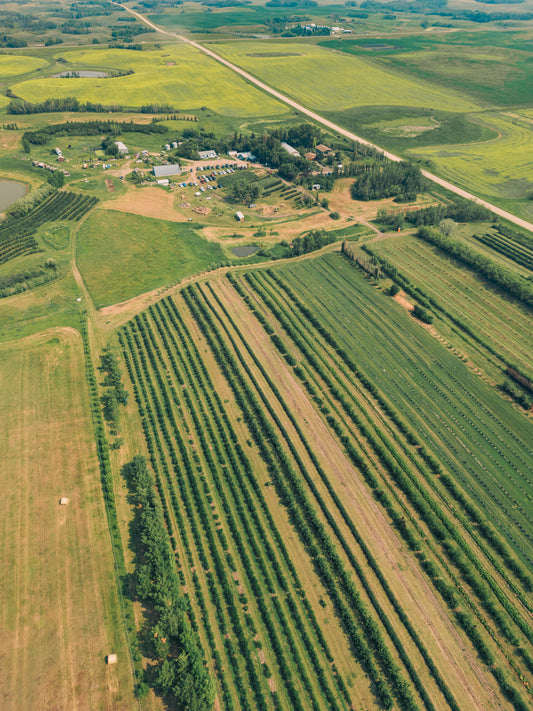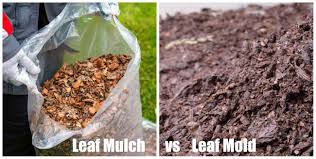
Meet Dave and Arden : The D and A of DNA Gardens
Proudly Stewarding the land on the farm
DNA Gardens is the worlds oldest commercial producers of Saskatoons. With over 40 years of experience we really know our stuff!
We ran a very successful plant tissue culture business which we sold. We were a leading plant propagator for the University of Saskatchewan. We loved the new varieties and enjoyed helping to introduce them as well. Along the road, our tissue culture lab was always looking for new and exciting plants for our tough climate. We met many plant breeders and passionate growers. We were very instrumental in helping Dr. Evans supply the world with Evans Cherries! We had the good fortune to meet Mr. Lloyd Lee (plant breeder) and also Jim and Art Coutts (plant breeders) and of course, Dr. Ieaun Evans. We were partners and the plant propagators for 300 acres of black currants in central Alberta. We did our job! We got the plants grown, field planted and looking great. Agriculture is always about marketing products and this project failed. But you can tell, we love black currants and still wholeheartedly endorse their great flavour and health benefits. We grow our own currants now with about 2 acres. We have had 50,000 pounds of cherries in our fields! Seriously. Again, no place to go with the fruit. So you can see how an operation like ours evolves to value adding (especially to wine and spirits). We use up most of our fruit now. It's great! We love it. We believe it is a natural progression of a fruit farm. It has been a long journey of love! We raised our children loving the land and now our grandchildren are coming along.
Our Eco Footprint
Stop in and visit our little oasis in Elnora, Alberta to see the amazing wildlife we sustain. We invite you to learn more about DNA Garden’s ecological footprint.
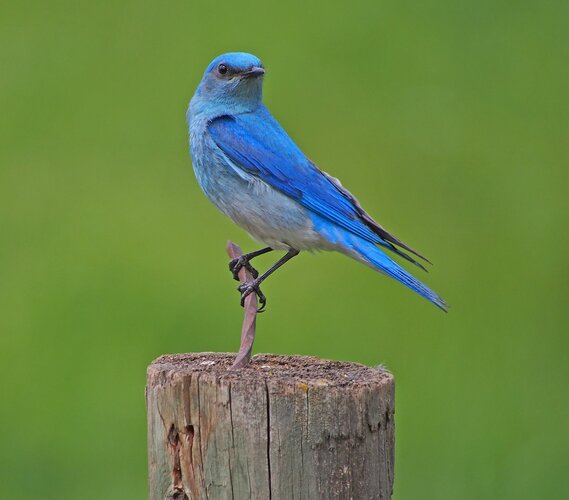
Birds
We have over 100 bird boxes throughout our orchard. We are convinced it gives us bird protection. Mainly in the orchards, we are colonized by swallows and house wrens, but finally, after all these years, in 2017, we saw three houses of bluebirds nesting here! We feed a ton of birds in the feeders, which seems to keep the lovely little goldfinches out of the Saskatoons. We usually have warblers, cedar waxwings, hawks, red pols, northern grosbeaks, blue jays, chickadees, and hummingbirds! We have seen the odd oriole flit through, which is another challenge for us.
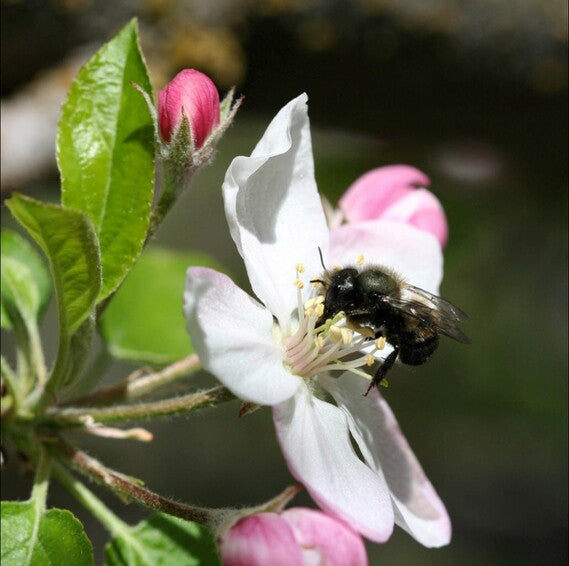
Pollinators
We put out mason bees and do all we can to encourage the native bee population. We do that by increasing our plant diversity. For instance, we have seeded Dutch clover in the rows, supplying nitrogen for our fruit plants and pollen for the native bees.Why all the fuss about the mason and native bees? Wild bees and Mason bees are supposed to be way better pollinators than honeybees. Good pollination makes bigger, better fruit and more of it. All the wild, natural areas foster a community of insects that help keep the “bad” insects under control, as nature intended.
Forages
We are excited to share that we our now using Dutch clover and Fescue grass as ground cover. Dutch clover is a nitrogen fixer, making nitrogen readily available for other plants. The bee's love it too! By using ground covers we have better water retention in the field. Our favorite thing about our new forages though; are their ability to out compete pesky weeds. A weed is simply a plant that volunteers to grow where you don't want it.
